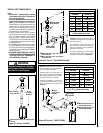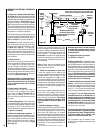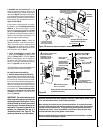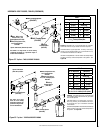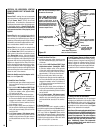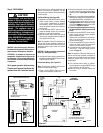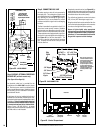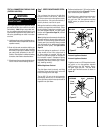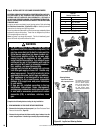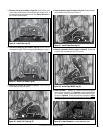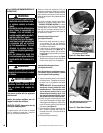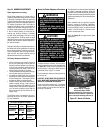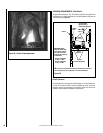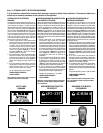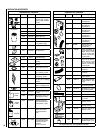Special offers from our partners!

Find Replacement BBQ Parts for 20,308 Models. Repair your BBQ today.

NOTE: DIAGRAMS & ILLUSTRATIONS ARE NOT TO SCALE.
25
WARNING
Never use an open flame to
check for leaks.
Turn on gas supply and test for gas leaks using a
gas leak test solution (also referred to as bubble
leak solution). Note: Using a soapy water solu-
tion is an effective leak test solution but it is not
recommended, because the soap residue that is
left on the pipes/fittings can result in corrosion
over time.
A. Light the appliance (refer to the lighting instruc-
tions label in control compartment or care and
operation manual).
B. Brush all joints and connections with the gas
leak test solution to check for leaks. If bubbles
are formed, or gas odor is detected, turn the
gas control knob (off/pilot/on) to the “OFF”
position. Either tighten or refasten the leaking
connection, then retest as described above.
C. When the gas lines are tested and leak free be
sure to rinse off the leak testing solution.
TEST ALL CONNECTIONS FOR GAS LEAKS
(FACTORY AND FIELD):
ELECTRONIC
Flame
Sensor
Hood
Igniter Rod
Pilot
Nozzels
Figure 42
Figure 41
MILLIVOLT
Thermocouple
Hood
Igniter Rod
3/8" Min
(9 mm)
Thermopile
Pilot
Nozzels
Step 7. VERIFYING APPLIANCE OPERA-
TION
Turn on burner then observe the individual
tongues of flame on the burner. Make sure
all ports are open and producing flame evenly
across the burner. If any ports are blocked, or
partially blocked, clean out the ports.
With gas line installed run initial system check-
out before closing up the front of the unit. Follow
the pilot lighting instructions provided in the
Care and Operation Manual. For piezo igniter
location see Figure 40 on Page 24 (millivolt
appliances only).
Note: Lighting Instructions are also found on the
literature tag tied to the gas piping next to the
gas valve. To access the tag, open the bottom
control panel (see instruction sheet provided
with the facade kit for additional information
about the control panel). See Figure 40 on
Page 24.
When first lighting the appliance, it will take
a few minutes for the line to purge itself of
air. Once purging is complete, the pilot and
burner will light and operate as indicated in
the instruction manual. Subsequent lighting
of the appliance will not require such purging.
Inspect the pilot flame (remove logs, if neces-
sary, handling carefully).
Millivolt Appliance Checkout
The pilot flame should be steady, not lifting
or floating. Flame should be blue in color with
traces of orange at the outer edge.
The top 3/8" (10 mm) at the pilot generator
(thermopile) and the top 1/8" minimum (tip)
of the quick drop out thermocouple should be
engulfed in the pilot flame.
Electronic Appliance Checkout
Electronic Appliance Checkout
To light the burner, turn ‘ON’ the optional remote
wall switch or turn the appliance mounted
ON/OFF switch to the “ON” position. Ensure
the igniter lights the pilot. The pilot flame
should engulf the flame sensor as shown in
Figure 42.
The flame should project 1" (25 mm) beyond the
pilot hood at all three ports (Figure 41). Replace
logs if removed for pilot inspection.
To light the burner; rotate the gas valve control
knob counterclockwise to the “ON” posi-
tion and turn “ON” the appliance mounted
ON/OFF switch (or optional remote switch, if
installed).



